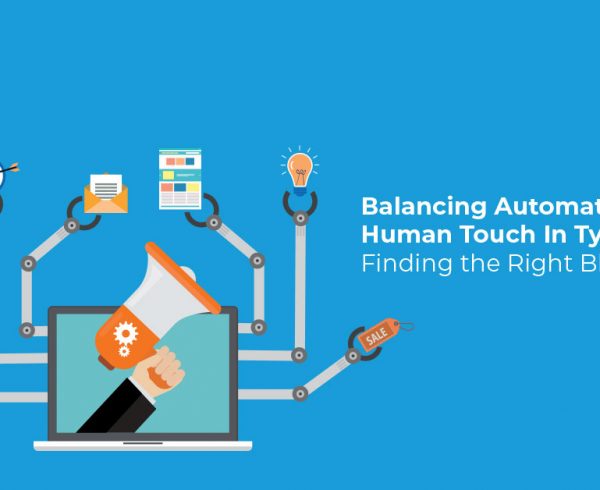Summary
This article provides you with a brief overview of QA automation. It discusses the benefits of QA automation and how it revolutionizes the software testing process. It also highlights the advantages of QA automation and how it can be a great addition to your software development process.
In today’s ever-evolving technological world, the market demands top-quality products. With tight software development timelines, it becomes challenging for companies to manage the quality of their software products.
Even with the best coding practices, finished products may have bugs or errors that manual testing might not be able to detect. Here’s when QA automation comes in, increasing the overall software development efficiency.
Table of Contents:
Many companies are leveraging automated QA testing tools to ensure the best quality of their web applications. The global automation testing market was valued at $24.7 billion in 2022 and is expected to reach a whopping $52.7 billion by 2027, with a compound annual growth rate (CAGR) of 16.4% during 2023-2027.
With DevOps and Agile methodologies gaining popularity, adopting automated testing software has become more important than ever. This article will delve into the benefits of QA automation and how it has transformed the software testing and development process.
What is QA Automation Testing?
Also known as automated testing, QA automation involves using automation tools to execute test scripts and predefined actions on mobile apps and software applications.
It helps verify the software’s functionality, reliability, and performance while checking for bugs or defects that may arise during and after the software development stage.
QA automation tools simulate user interactions, record actual results and compare them with expected outcomes to generate detailed test reports. They perform repetitive testing tasks, eliminating the need for human testers.
The testing team includes trained professionals who guide the process by setting up the test scripts and delivering the test results to the development team to fix bugs.
Also Read: QA Software Testing Tools: How Are They Disrupting the Quality Assurance Space?
The Top 6 QA Automation Testing Benefits
In the modern world, QA automation has revolutionized the software testing process. It has been one of the major reasons for the explosion of applications over the past few years.
By using QA automation software, you can reduce time-to-market and ensure robust product quality. The following are some other benefits of QA automation:
1. Time and Cost Savings
Automation testing speed up the testing process significantly as tests can be performed on multiple platforms in parallel and with little human assistance. This allows for quicker issue identification, faster feedback loops, and timely fixation of errors.
As machines don’t require sleep, tests can be done more regularly. QA automation also facilitates continuous and shift-left testing, enabling testers to find errors earlier in the development stage, preventing costly fixes, and keeping testing timelines on track.
Though the initial setup costs and investment may be expensive, automated testing pays for itself in the long run. Once created, automated scripts can be reused 24×7 without additional costs.
2. Higher Test Coverage
With QA automation tools, you can easily execute thousands of complex test cases and scenarios, covering a wide range of configurations and functionalities. On the contrary, manual testing has a limited scope and cannot explore applications “deeply.”
Automated QA testing can examine products in-depth and analyze their memory data, internal file structure, and data tables. This helps enhance the performance and quality of the final software application.
QA automation also eases regression testing, allowing you to test every application feature while providing coverage unmatched by manual testing. This ensures thorough software validation and minimizes the risk of missing critical bugs.
3. Improved Accuracy
Humans are prone to commit errors, and a testing engineer may miss out on a defect. This can occur especially when the application under manual testing has thousands of lines of code. QA automation software accurately performs data comparisons and complex calculations, eliminating human mistakes.
It follows strict code while executing test cases to ensure that every line of code is tested using the same steps. With automation testing, you can get accurate and reliable results for thousands of test cases.
It also guarantees to generate a detailed record of all test outcomes.
4. Better Utilization of Manpower
QA automation executes repetitive and complex test cases without any human intervention.
This allows you to reassign experienced QA team members on different projects where strategic user testing and exploratory testing of advanced application features are required. With reduced dependence on the QA team, automation testing also lowers the time and cost of regularly hiring and training QA engineers.
Manual testers spend less time on repetitive and regular test procedures, so they can apply their skills and knowledge to create better test cases. By removing mindless work and unnecessary job stressors, businesses are rewarded with higher retention rates and happier employees after embracing automated testing.
5. Reusability of Test Scripts
Writing effective test cases for every round of testing takes a lot of effort and time. This can leave your QA team exhausted before the actual testing starts. With Automation QA, your team is required to write a solid automated test script only once.
This script can be reused and applied across multiple testing cycles with minimal or sometimes no changes in the input data. Once created, the scripts and steps are stored, enabling the QA team to rerun tests repeatedly without regular checks or maintenance.
Effort and time, once dedicated to creating test cases, can now be used for projects and tasks better suited for your QA team.
6. Comprehensive Reporting
Manual testing requires testers to report all the fixed errors and written test scripts to each other manually. The entire process is burdensome and leads to dependency on team members.
On the contrary, automation testing delivers reports for each test case executed and ensures they are generated consistently and on time. It also eliminates the need for manual documentation and data entry, saving time and lowering the risk of errors in the reporting process.
Automation QA enables your testing team to track every test script through visual logs (videos, screenshots, and error logs). These logs provide information on the number of test scripts executed or scheduled, the bugs or issues reported, and how they were fixed.
Also Read: Key Considerations When Implementing QA Testing
Summing Up
From the above information, it is clear that QA automation adds value to the entire software development process. But the success of automated testing depends on the test scripts and QA automation tools used by your team.
Without proper guidance, your QA team cannot receive all the potential benefits of QA automation. Improper execution of automated QA testing can do more harm than good for your software development life cycle.
For support on setting up and executing automation QA, collaborate with a reliable QA testing partner like Hurix Digital! We have a team of seasoned professionals who specialize in all areas of QA automation.
Our team of experts can help your business receive all the automation testing benefits by integrating automation testing within your development practices. For more information on the available services, visit our official website or schedule a demo today!









